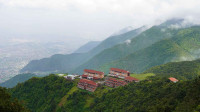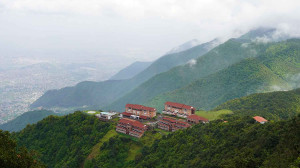Money
Multinationals see profits fluctuate due to slowdown
The firms say they are uncertain about the course consumer spending will take in the days to come.
Krishana Prasain
Multinational companies operating in Nepal have seen their net profit trends jolted by the economic slowdown and inflation. The firms say they are uncertain about the course consumer spending will take in the days to come.
Unilever Nepal, manufacturer of household products like Lux, Lifebuoy, Pond’s and Lakmé, posted a net profit of Rs1.83 billion in the last fiscal year, down 18.67 percent from the previous fiscal year.
Its annual revenue totalled Rs8.48 billion, up from Rs7.33 billion in the previous fiscal year. The Nepse-listed company said while it registered robust topline and bottomline growth in the last financial year, the fourth quarter performance was hit by the consumption slowdown and liquidity issue.
“The recent monetary policy exhibits cautious monetary mobilisation through a reduction in the policy rate and deposit collection rate while maintaining stability through unchanged cash and statutory liquidity ratios,” the company said in its financial statement.
“We expect a slight improvement in the ongoing liquidity crisis in the upcoming quarters. However, uncertainty remains with the reduction in consumer spending and material inflation,” the company said.
With inflation softening in a few commodities, Unilever Nepal has been focused on passing on the benefits to the consumer and regaining volume growth, the company said.
“We will strive to strengthen growth with higher spends in brand marketing investments to ensure upcoming quarters to deliver high-speed growth, growth that is consistent, competitive, profitable and responsible,” the company said.
Bottlers Nepal said its net profit increased by a marginal 1.23 percent year-on-year to Rs886.81 million in the last fiscal year.
The producer of Coca-Cola, Fanta, Sprite and Kinely drinking water and soda reported a turnover of Rs12.67 billion in the last fiscal year.
Bottlers Nepal said its net profit rose at the end of the year despite an increase in material and production overhead costs, currency devaluation, rise in interest rates, and higher diesel, selling and distribution costs.
The rise in the cost of operations and rural distribution at effective prices are its internal problem and challenges, the company said in its financial statement.
“The devaluation of the Nepali rupee against foreign currencies resulted in higher material costs. The increase in indirect tax, commodity prices and energy price hikes caused by inflationary pressures has increased the cost of operation,” said Bottlers Nepal (Balaju).
Bottlers Nepal (Tarai) fared worse. The subsidiary reported its net profit dropped 16 percent year-on-year to Rs573.70 million. The company’s total revenue in the last fiscal year stood at Rs9.32 billion.
According to the financial statement of Bottlers Nepal (Tarai), the net profit declined sharply mainly due to an increase in material costs, currency devaluation, rise in travel costs, higher diesel prices and IT infrastructure upgradation and interest costs.
The internal and external problems and challenges of Bottlers Nepal (Tarai) remained the same as Bottler Nepal (Balaju), the company said.
Dabur Nepal made a net profit of Rs11 billion in the last Indian fiscal year, up 9 percent year-on-year. India’s financial year runs from April 1 to March 31 of the following year.
The maker of Dabur Real Juice and Dabur Honey said its business witnessed robust growth in both the top line and bottom line in the last fiscal year, building on the strong performance of the previous year.
“This was largely driven by the highly successful fruit juice business, which benefited from positive seasonality, new product formats, and a recovery in demand as the Covid crisis eased,” said the annual report of Dabur India.
In the non-food space, Dabur saw impressive growth in oral care, digestive and home care categories, the company said.
Despite significant gross margin pressure from material cost inflation and adverse product mix, the company managed to partially offset this by implementing price increases and cost-saving measures, the company said.
Standard Chartered Bank Nepal saw its net profit soar 56.44 percent year-on-year to Rs3.52 billion. The bank’s capital and liquidity position continues to be strong at the quarter end, said the bank in its financial statement.
“Improved momentum on income and profitability has been reported for the current period over the corresponding period last year despite headwinds in credit momentum, liquidity and rates," the bank said.
The growth rates on a year-on-year basis reflect the continued effort of the bank to optimise the balance sheet and returns, remaining within the regulatory requirements for key ratios, the bank said.
The quality of the balance sheet remains robust despite an increase in non-performing loan ratios on a year-on-year basis. The bank said that the liquidity supply in the system had been persistently increasing during the year.
According to the bank, lendable headroom has improved with the drop in the credit-deposit ratio. Deposit rates have fallen significantly in the last quarter of the financial year.
Maximising operational efficiency and improving non-interest income are its internal problems and challenges, Standard Chartered Bank Nepal said.
In terms of external issues and challenges, the bank cited subdued credit demand and deteriorating asset quality in the industry and changes in the regulatory landscape.




 17.67°C Kathmandu
17.67°C Kathmandu















